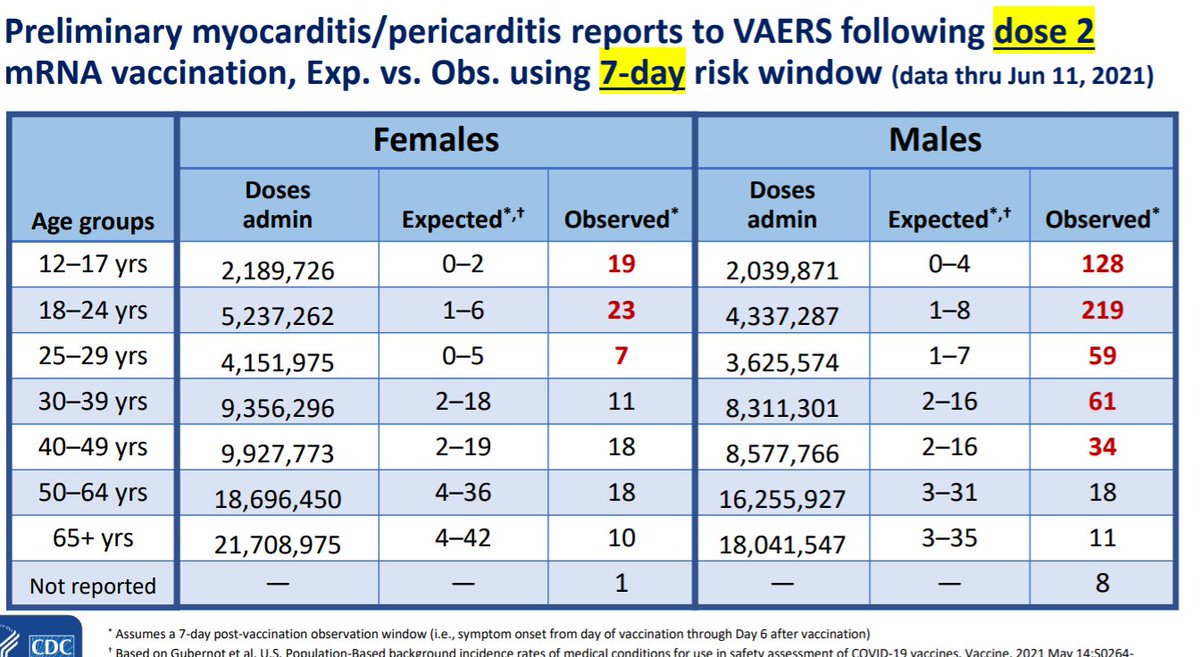
Wrote to CDC:
1) For males 18-30, J&J preferred as myocarditis not seen (clot risk mainly in females). If mRNA, #2
2) For males 12-18, give 1 dose Pfizer. Give 2nd dose (at 3 weeks or 8-12 weeks) based on community transmission. If low (<5 hosp/100K), latter to increase safety
1) For males 18-30, J&J preferred as myocarditis not seen (clot risk mainly in females). If mRNA, #2
2) For males 12-18, give 1 dose Pfizer. Give 2nd dose (at 3 weeks or 8-12 weeks) based on community transmission. If low (<5 hosp/100K), latter to increase safety
<10K cases across country now. Does NOT increase vax hesitancy to acknowledge a side effect. It decreases vaccine hesitancy and increases trust to tell people that public health cares about both safety and protection from COVID.
Since US & Israel seeing more cases of myocarditis in young with 2nd dose & use 3 weeks spacing - whereas UK uses 8-12 weeks & not seeing the number of cases of myocarditis- increasing that spacing between doses could help. Prior tweets - 1 dose Pfizer 94% effective against delta
This way, children get 2 doses, maximizes efficacy and safety in settings with low transmission. J&J not going as much to young women; more to young men. As @CarlosdelRio7 said very smartly to me, we can call this "precision public health"!
Finally, please remember 3 weeks between Pfizer doses not based on any specific science; this was minimal interval designed to hasten clinical trial results given urgency of getting a vax. Dr. Plotkin explains why longer interval has benefits
academic.oup.com/cid/advance-ar…
academic.oup.com/cid/advance-ar…
• • •
Missing some Tweet in this thread? You can try to
force a refresh





